Took me way too long to find the answer to this question over here by Michael Sumner. I've only added an spTransform to ensure the 2 pieces go back together with spRbind
library(maptools)
library(raster)
## first, do the jiggery pokery of wrld_simpl to
## convert from Atlantic to Pacific view
xrange <- c(0, 360)
yrange <- c(-90, 90)
require(maptools)
require(raster)
require(rgeos)
ext <- extent(xrange[1], xrange[2], yrange[1], yrange[2])
data(wrld_simpl, package = "maptools")
## this is a bit more general than needed for this example, since I
## wanted arbitrary crops originally
eastrange <- c(xrange[1], 180.0)
westrange <- c(-180.0, xrange[2] - 360)
ew <- extent(westrange[1], westrange[2], yrange[1], yrange[2])
ee <- extent(eastrange[1], eastrange[2], yrange[1], yrange[2])
geome <- as(ee, "SpatialPolygons")
geomw <- as(ew, "SpatialPolygons")
## why does this get dropped?
proj4string(geome) <- CRS(proj4string(wrld_simpl))
proj4string(geomw) <- CRS(proj4string(wrld_simpl))
worlde <- gIntersection(wrld_simpl, geome)
worldw <- gIntersection(wrld_simpl, geomw)
worldw <- elide(worldw, shift = c(360.0, 0.0))
proj4string(worldw) <- CRS(proj4string(wrld_simpl))
dfe <- data.frame(x = seq_len(length(worlde@polygons)))
dfw <- data.frame(x = seq_len(length(worldw@polygons)))
rownames(dfw) <- as.character(as.numeric(rownames(dfe)) + nrow(dfe))
worlde <- SpatialPolygonsDataFrame(worlde, dfe, match.ID = FALSE)
worldw <- SpatialPolygonsDataFrame(worldw, dfw, match.ID = FALSE)
worldw <- spChFIDs(worldw, rownames(dfw))
## I had to add this spTransform() call to stop the spRbind proj error
worldw_proj <- spTransform(worldw, CRSobj = worlde@proj4string)
world <- spRbind(worlde, worldw_proj)
## so, "world" is longitudes [0, 360], which is pretty much essential
## given the input data shown
r <- raster(nrows = 180, ncols = 360, xmn = 0, xmx = 360, ymn = -90,
ymx = 90, crs = "+proj=longlat +ellps=WGS84 +over")
## fake a raster so we have something equivalent to your data (but simple/r)
rast <- rasterize(world, r)
## fill the ocean parts with something . . .
rast[is.na(rast)] <- 1:sum(is.na(getValues(rast)))
library(rasterVis)
levelplot(rast, margin = FALSE) + layer(sp.polygons(world, lwd=0.8,
col='darkgray'))


